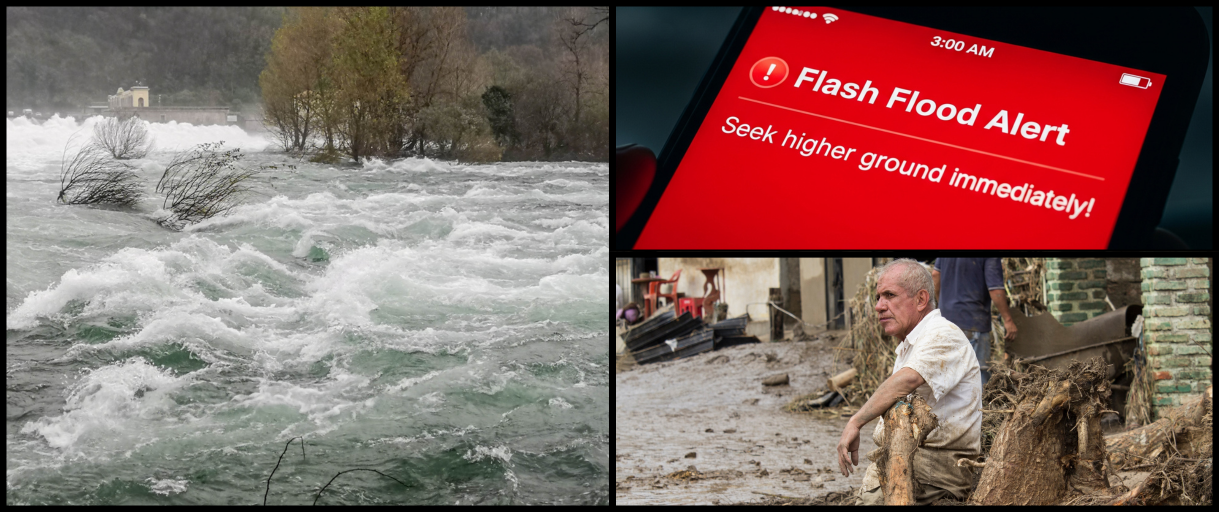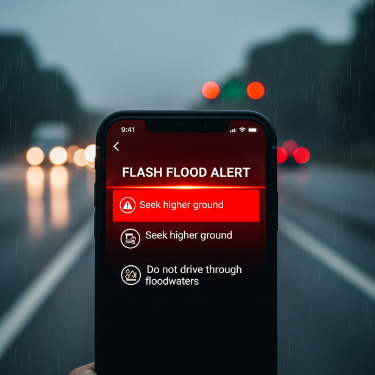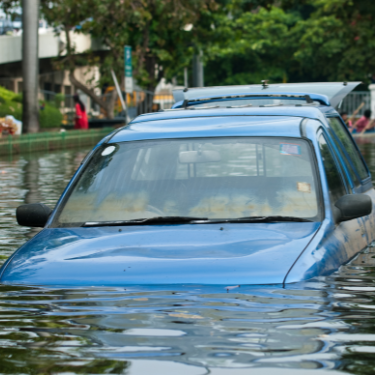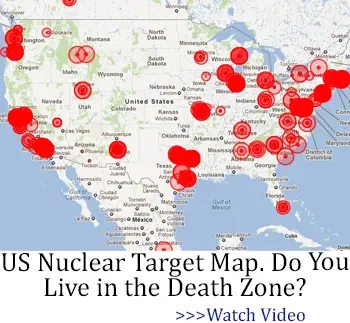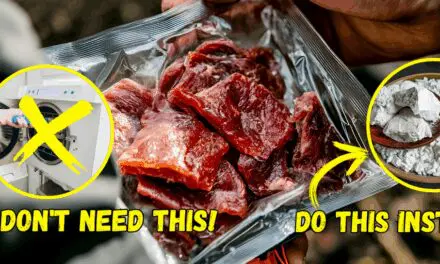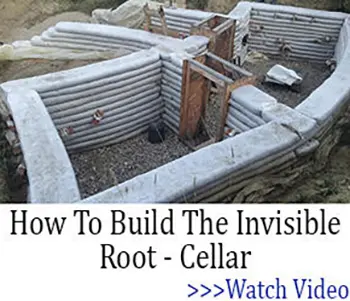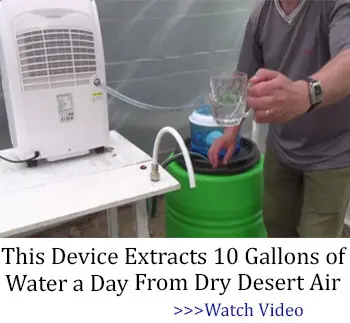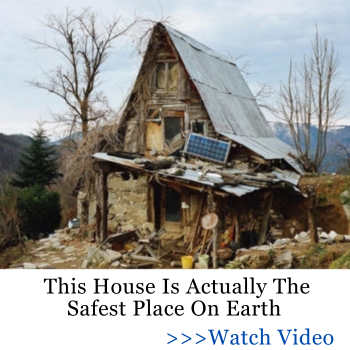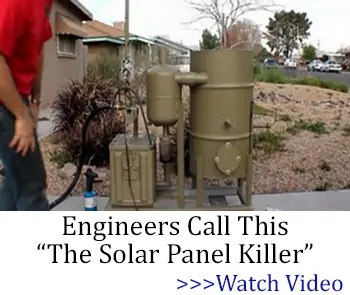You won’t get a warning.
That’s what makes flash floods so deadly. One minute, it’s raining hard—and the next, a wall of water is ripping through streets, sweeping away cars, homes, and anything else in its path. These floods kill more people each year than hurricanes, tornadoes, or lightning. And they happen fast.
If you think you’ll have time to react when one hits, think again. The key to survival is knowing exactly what to do before it happens. Here’s what every prepared person needs to know:
What is a Flash Flood?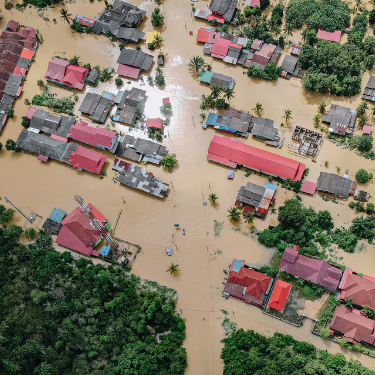
It seems that more and more around the world, flooding is becoming a regular event, affecting wide areas from the wilderness into villages, towns and cities. What becomes more ominous as our weather patterns continue to change is the emergence of flash floods striking quickly and often unexpectedly.
A flash flood is the severe and sudden appearance of a large volume of water often presenting a wall of water leading the rushing flood water. This front wall of water is often choked with debris and presents a direct threat to anything in its path. This is often the result of rainwater runoff from areas devasted by wildfires, but the pavements of city streets can give a flood of water the same clear pathway.
What is so surprising to many is that flash floods can travel for miles and miles to areas where it’s not even raining. Anyone caught by surprise can find themselves overwhelmed by a mix of debris, including lumber from destroyed homes, trees, garbage cans, even cars and anything else in the path of the flood. As the flood grows and accumulates debris, the amount of debris grows as it is pushed ahead as the flood rushes forward.
A Flash Flood is More Serious Than You Think
It’s an actual fact that more people die from flash floods than from hurricanes and tornadoes. The primary cause of death is drowning, but many are seriously injured or killed by the debris carried in the rushing flood waters or are pulled into deep holes of drop-offs obscured by the murky water. Making matters worse are the toxins, viruses and bacteria that often fill flood waters as sewer water joins the flow. If you have swallowed any flood water or have cuts, scrapes or wounds exposed to the water – see a doctor, take a prescription antibiotic and treat any cuts or scrapes with a topical antiseptic.
➡️ An Ingenious Way to Stockpile Prescription Medicines, Including Insulin Without a Prescription
Understand Flash Flood Alerts
If a flash flood is possible or eminent, the national weather service or local authorities will often issue flash flood alerts. They can be one of three levels.
A Flash Flood Watch
A flash flood watch is an alert that indicates there is the potential for a flash flood in your area. Be vigilant and stay tuned to local TV or radio stations. A NOAA radio will also be quick to announce and update alerts for your area.
A Flash Flood Warning
A flash flood warning is serious. It means the flash flood is happening or eminent and you should take immediate action. Our first instinct is to jump in the car, but that can be a mistake. You might drive right into the flooding. Take the time to see if you can identify where it may be or is currently occurring before you try to bug out. The most immediate step if it’s coming towards you is to seek high ground.
A Flash Flood Emergency
A flash flood emergency means that it’s happening, and it may be heading right for you. Don’t get in the car and try to outrun it, you might drive right into it. Get up to the second floor or even to the roof if you need to. Don’t trap yourself in your attic. If there’s no way out and the water continues to rise, you’ll be in serious trouble.
Flash Flood Specifics
Many terms emerge when flash floods occur, especially when you receive an alert. Here are some specific ideas related to flash flooding that you should think about and understand:
“Debris Flow”
If you’ve ever seen videos from the tsunami that occurred in Japan, you’re familiar with the surprising amount of lumber, cars, and other stuff that roared into and across streets as the water rushed in. In wilderness and rural areas, the debris is usually a collection of branches, mud, rocks and even whole tree trunks.
The debris is like a battering ram and as it cascades forward, it adds to the debris flow. Anyone caught in this wave of debris has little chance of survival.
The debris can sometimes get jammed up and actually stop. Unfortunately, the water behind it is relentless and will build up like water behind a dam. Eventually the water will overwhelm the temporary debris blockage, and the resulting cascade will be deadlier than before.
“Turn Around, Don’t Drown”
This is actually a common caution related to flash flooding. Most people who die in flash floods in urban areas die in their vehicles, as their cars or trucks are swept into the flood waters. In fact, half of flash flood deaths occur because someone was trapped in their vehicle.
Making matters worse is that many people who get caught in a flash flood drive right into it. This often occurs when a stretch of road is unflooded until a dip in the road or low lying area allows the waters to cross the road in a narrow section. Too many people think they can make it across not knowing that only a foot of water on the side of a vehicle is enough to wash it away and trap it in the current. Once a vehicle joins the debris flow, there’s little anyone can do. The caution is simple when you encounter a flood of water rushing across a section of the road or street: turn around, don’t drown.
“Go to Higher Ground”
This isn’t as easy as it sounds. It seems to make sense when a flood is approaching, but the challenge is knowing how high is high enough? A lot depends on how fast things are happening.
If there is a hill or mountainous area in your vicinity, walking or driving to that location might make sense. Just remember that many flash floods originate from high ground before cascading to lower elevations.
The roofs of buildings, parking garages, overpasses and other high structures in an urban area also offer safe refuge. Here again, videos of flooding from around the world often show people crowding on the roofs of parking garages or buildings.
What’s critical if you are in a building in the city is to stay out of the elevators, even if they are operating. The power can go off at any minute and you may find that you are not only trapped in the elevator for an extended period of time, but the flood waters may actually reach the lower floors and flood the elevator shafts.
Flash Flood Survival at Home
If a flash flood is heading towards your home, everything gets complicated very fast. Especially if the kids are at school or someone is away at work. Here are some common sense preparations, especially if you live in an area prone to flash flooding.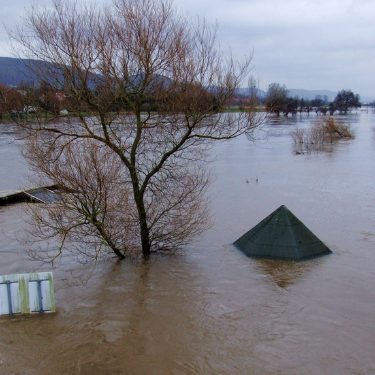
- Discuss with your family what you all should do if a flash flood occurs. Be gentle if explaining this to kids and reassure them that it probably won’t happen, but you just want them to be aware. You might also want to enquire at their school about how the school will manage events if a flash flood occurs.
- Part of your family discussion should be an agreement on what everyone should do if they are away from home. The first priority is to call home, if possible, to discuss the situation and to simply reassure everyone you’re alright or what you are going to do. People are quick to jump in the car if they think a family member is at risk and that could be a very bad idea.
- Agree on a place where you all might meet if a flash flood (or any other disaster or emergency occurs) and you have to evacuate. It could be a building that you know is on high ground, a relative’s house out of the flood plain, or anywhere else that’s safe. This assumes the flood is not occurring, but if you have to evacuate and the family is all over the place, it’s good to know where you all plan to go. It’s a good bet that schools will not let the kids wander home, but wait for the parents to arrive to pick them up if possible.
- Have a Plan B. If you do decide to evacuate, you probably have a route in mind to get you to a safe destination. Don’t assume that will work. Traffic jams are notorious during evacuations, and a flash flood can quickly shut down roads anywhere. Map out alternate routes and check local TV and radio or the Internet to assess traffic and events.
This is when a cell phone can be indispensable. If the power is out and you can’t find information fast enough, your mobile phone might allow you to find information faster. It will also let you stay in contact with family, assuming they also have a phone.
- Pack a Bug Out bag. This is a good idea for a variety of reasons and if you do have to jump in the car and hit the road, it helps to have the right stuff with you. The basics would include a portable, solar power bank to recharge your phone and most have a flashlight built in. Remember to keep a case of water in the trunk of your car along with a first aid kit, energy bars or other portable food and snacks, and some rain gear might also be a good idea. Packing it all in a backpack is a good idea too in case you have to proceed on foot.
Chances are that your evacuation will be relatively brief, measured in a day to a few. Flash floods happen fast and often recede just as quickly, and people are usually anxious to get home when it’s over to see how things are after the flood.
- Before you Bug Out, there are some simple steps to take related to your home. Some are easy and some are more complicated.
- Shut off the main power switch on your circuit breaker box. If your home floods and the power is still on the short circuit could permanently damage every appliance in the house. It could also start a fire.
- Get valuable stuff out of the basement or at least off the floor. It’s possible that the worst that happens is some flooding in the basement, but anything down there is going to get flooded.
- Don’t leave the other car at home if you’re evacuating. Many families own more than one car and if you leave one behind, it may be underwater for a while. Water can do significant damage to a car when it’s immersed. If you have two drivers in the family, it might be worth driving both cars in a caravan. It all depends on how far you’re going, road conditions and the general situation.
- Pack up what you can’t live without like important papers or anything you might lose to a flood. You can’t overdo it if time is short, but having stuff already consolidated in a portable file or a box is a good idea, and don’t forget things like jewelry or other valuables. Take it with you if you can.
- Make sure all windows and doors are closed and locked before you leave. This seems silly, but a flash flood can cause water to rise up to at least the first floor windows and then rapidly recede. The windows may not block all of the water, and debris can certainly break one, but it’s possible you’ll only get some seepage from the rapid rise and recession of a flash flood through closed windows. Why leave a window open to invite the water in? Or worse, looters after the water recedes. I’ve also got a solid solution for one of the most common mistakes people make in such a situation: poor home defense. It’s a complete anti-looter kit designed to help secure your home quickly and effectively. This kit includes all the essential tools you need to fortify your property. It’s budget-friendly, easy to set up, and highly effective—making it a smart choice if you want to prevent a serious security breach when things go south.
U.S. States Most at Risk for Flash Floods
Flash floods can strike anywhere, but some states are hit harder and more often than others. If you live in—or travel through—any of the states below, it’s critical to stay especially alert during heavy rains or weather alerts. These regions combine the perfect storm of topography, climate, and urban development that make flash flooding not just possible, but likely.
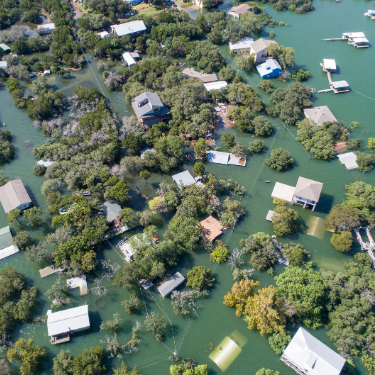
1. Texas
The Lone Star State leads the nation in flash flood fatalities. Its vast size includes everything from dry, flash-prone canyons to sprawling urban areas like Houston, where concrete prevents water from soaking into the ground. A downpour in the wrong place can spell disaster in minutes.
2. Arizona
Flash floods in Arizona are notorious. The desert ground can’t absorb water fast enough during monsoon season, leading to dangerous washouts and road collapses—often in areas where it wasn’t even raining. Tourists are especially vulnerable in slot canyons.
3. California
Wildfires and mountainous terrain make California ripe for flash floods. After a burn, the landscape can’t hold moisture, and even a modest storm can trigger devastating debris flows in areas like Los Angeles County and the Sierra Nevada foothills.
4. Colorado
Mountain terrain and summer thunderstorms set the stage for surprise flash floods in valleys and canyons. Colorado’s Front Range is especially vulnerable. Water races downhill fast—and it doesn’t care who or what is in the way.
5. Nevada
Like Arizona, Nevada’s arid climate can’t absorb sudden rainfall. Las Vegas, in particular, sees frequent flash flooding, with roads turning into rivers in minutes. Tourists rarely see it coming, but locals know to take flood alerts seriously.
6. Louisiana
Low elevation and frequent tropical storms make Louisiana one of the most flood-prone states. While much attention goes to hurricanes, it’s the flash floods in between that often catch people off guard.
7. Missouri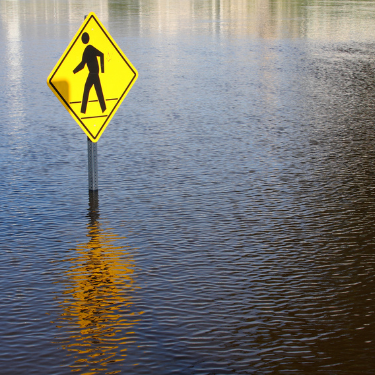
From the Ozarks to the Mississippi River Basin, Missouri sees frequent flash flooding. Sudden storms, river overflows, and saturated ground create a recipe for quick-rising water—especially in rural communities.
8. Kentucky
In 2022, eastern Kentucky experienced historic flash flooding that swept away entire communities. The region’s mountainous terrain and frequent heavy rains make it one of the most vulnerable flash flood zones in the eastern U.S.
9. Tennessee
Just like Kentucky, Tennessee faces deadly flash floods thanks to its topography and river systems. In 2021, Waverly was devastated by a flash flood that dropped over 17 inches of rain in a single day.
10. West Virginia
Steep hills, narrow valleys, and sudden thunderstorms make flash floods a frequent and deadly threat in this state. Small creeks can rise several feet in minutes, overwhelming homes and roads alike.
Live in one of these states?
Don’t wait for the water to hit your doorstep. Take the time now to prepare a flood plan, stock emergency supplies, and stay alert whenever heavy rain is in the forecast.
Trapped at Home? Here’s What to Do
Sometimes, you don’t have time to evacuate. The roads flood faster than expected, or the warning comes too late. If you’re already at home when the water starts rising, here’s how to give yourself the best shot at getting through it safely:
Get to the Highest Safe Spot in the House
This could be a second floor, attic, or even the roof. If you head to the attic, bring tools with you—an axe or crowbar—to break through the roof if the water keeps rising. Too many people have drowned trapped in their own attics without a way out.
Take Your Emergency Kit With You
Flashlight, solar power bank, first aid kit, bottled water, food, radio, and anything you may need to stay safe or call for help. If the power’s out and rescue takes time, these supplies are your lifeline.
Avoid the Basement
If you’re in the basement when a flash flood hits, get out fast. Water rushes in quickly and may leave you no way to escape. Most deaths in homes occur when people try to “wait it out” in low ground.
Keep Doors and Windows Shut
Once you’re in a higher area, stay put and seal off lower floors if you can. Don’t open doors to check the water level—it can rush in. If possible, place towels or plastic sheeting at the base of the doors to slow seepage.
Signal for Help if Needed
If you’re stuck and rising water is threatening your safety, make noise. Bang on the roof. Use a flashlight or mirror to reflect sunlight. Write “HELP” in large letters with anything visible—sheets, towels, or even spray paint. Rescue teams often scan flooded areas from helicopters.
Stay Off the Power Grid
Don’t touch anything electrical if water is present—even a little. If you couldn’t shut off the main breaker before the flooding started, stay away from outlets, cords, or appliances, especially on lower floors.
Don’t Drink the Water
Even tap water can become contaminated during a flood. Rely on stored, sealed water until authorities declare the supply safe again.
Most people think food will run out first. But after a flood, it’s almost always clean water that disappears.
Pipes rupture. Wells get contaminated. City water turns brown—or vanishes altogether.
That’s why it’s critical to know things like:
- How to make floodwater safe to drink in minutes
- The dirt-cheap filter every home should have (even without power)
- Why bleach might make floodwater worse — and what to use instead
- How to test any source for bacteria, fast
- The reason some people drop silver coins in their storage tanks
- A $4 DIY desalinator that pulls salt, toxins, and heavy metals out of water
- And the emergency blueprint for securing a 365-day water supply — even if the grid’s down
All of these tactics — and more — are detailed in The Bug-In Guide by Joel Lambert, a former Navy SEAL who’s lived through both combat zones and natural disasters. He put together this manual for one reason: to help everyday folks survive without needing to leave their homes.
Only a small print run was made, and Joel’s now offering a 68% discount while supplies last. No reprints. No digital versions. Once it’s gone, that’s it. I left his personal link right here so you can get a copy before the next storm hits.
What To Do Once a Flash Flood Starts
When a flash flood hits, every second counts. Your actions during the flood can make the difference between safety and disaster. Here’s what to do if you find yourself caught in a flash flood event:
1. Get to Higher Ground Immediately
If floodwaters begin rising around you, don’t hesitate—move to the highest safe spot nearby. This could be the second floor of your home, a sturdy roof, or elevated terrain. Avoid basements or low-lying areas that will quickly fill with water.
2. Avoid Walking or Driving Through Floodwaters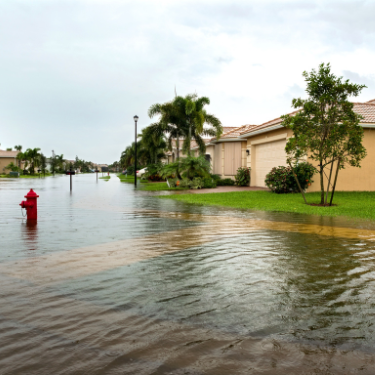
Just six inches of fast-moving water can knock you off your feet, and one foot of water can sweep a vehicle away. If you’re in a car, abandon it if floodwaters start to rise, and seek higher ground on foot. Remember: Turn around, don’t drown.
3. Stay Away from Debris and Downed Power Lines
Floodwaters carry debris like branches, rocks, and even vehicles that can injure or trap you. Stay clear of anything floating or moving in the water. Also, be cautious of downed power lines, which can electrify water and pose a deadly risk.
4. Listen for Emergency Alerts and Instructions
If you have a battery-powered radio or a charged mobile device, monitor local emergency broadcasts for updates and instructions. Follow any evacuation orders or emergency directives promptly.
5. Avoid Floodwater as Much as Possible
Floodwater is often contaminated with sewage, chemicals, and other hazardous substances. Try not to swallow it, and avoid contact with open wounds or cuts.
6. Help Others Only If It’s Safe
If you see someone in immediate danger and you can help without putting yourself at risk, do so. But don’t attempt risky rescues that might put multiple lives in danger.
7. Stay Put Until Authorities Declare It Safe
After the water starts to recede, don’t rush back to your home or move through flooded areas until officials confirm it’s safe. Hidden dangers like unstable ground, broken glass, or submerged electrical hazards can linger.
Last-Ditch Survival Tricks You Should Know
Even with the best planning, floods can catch you off guard. Maybe your bug-out bag is out of reach. Maybe you’re trapped without a flotation device. That’s when survival comes down to the unexpected—and sometimes, that means turning your own clothing into a lifesaving tool.
I picked up a brilliant trick from a survival course, one that turns a pair of pants into a life-saving flotation device. It might sound strange, but this is an essential trick used by Navy SEALs that has helped shipwrecked people survive for days at sea. And if you ever find yourself swept up in floodwaters and need to stay afloat, it could help you too:
Prepare for the Worst, Hope for the Best
If you live in an area prone to flash floods you may have already experienced, it once or twice. If you’re new to the neighborhood, ask around. Local neighbors and even local police and fire departments may be able to offer you some good advice about what to expect and what to do. The unfortunate fact is that flash floods are becoming more and more common. As the weather patterns continue to change, new challenges continue to emerge. The best first step is to simply remember the prepper’s mantra: Prepare for the worst and hope for the best.
How to Survive a Summer Power Outage
The Hurricane-Proof Shelter You Can Build In Your Backyard (Video)
This Is How I Kept My Livestock Alive During The Disaster

